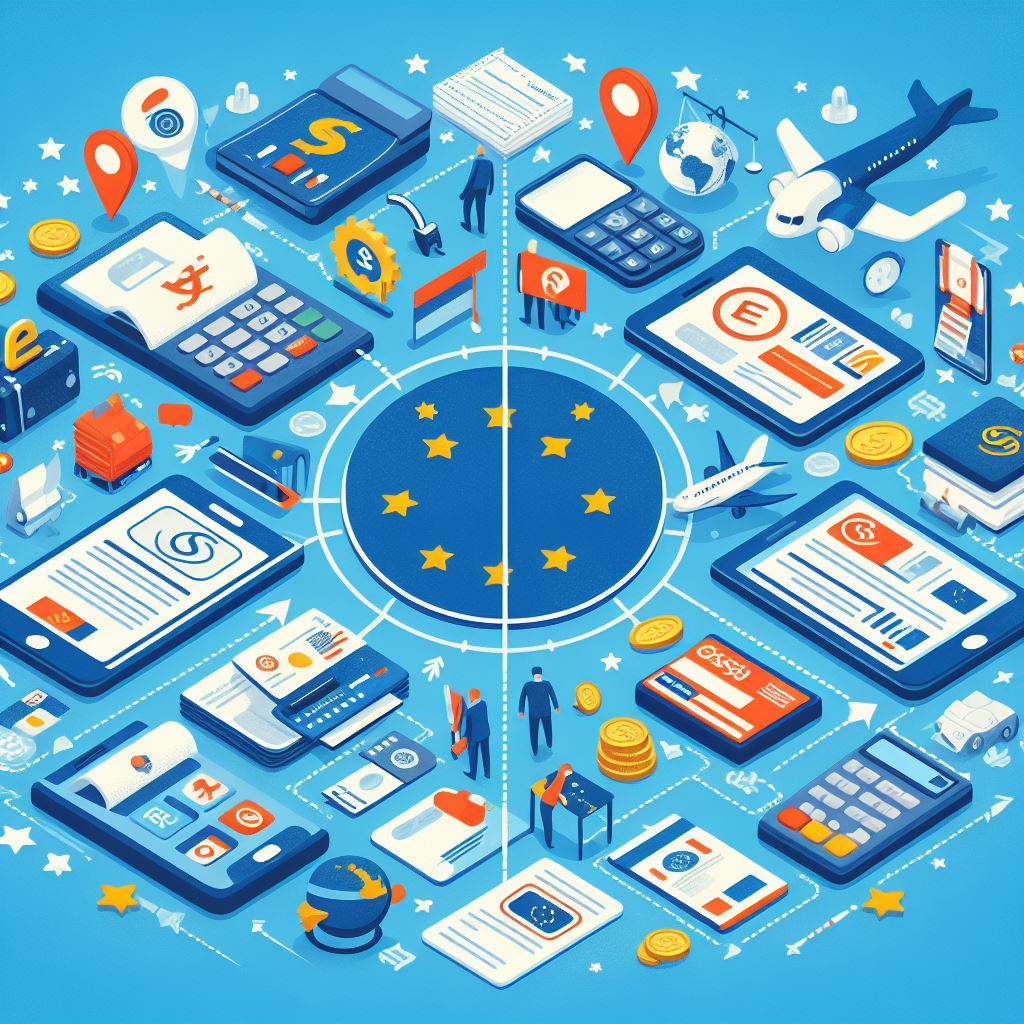Comparison of Payment Systems in Europe: Analyzing Differences Among Popular Payment Services
Introduction
In today’s digital age, where online transactions are ubiquitous, understanding the differences among popular payment systems across Europe is crucial. This article delves into the intricacies of various payment services in major European countries, highlighting disparities in tariffs, security measures, and user interfaces. By exploring these factors, readers can gain insights to choose the payment solution that best aligns with their needs and preferences.

Exploring Payment Systems in Europe
Europe boasts a diverse landscape of payment systems, each offering unique features and benefits. Let’s embark on a journey to compare and contrast these platforms across different dimensions.
Traditional Banking Systems
Traditional banking systems have long been the cornerstone of financial transactions in Europe. From debit cards to bank transfers, these systems offer a familiar and trusted means of payment. However, they may lag behind in terms of convenience and accessibility compared to digital alternatives.
Debit Cards
Debit cards remain a popular choice for everyday transactions, providing a convenient way to access funds directly from one’s bank account. While widely accepted, they may incur fees for international usage and withdrawals, making them less cost-effective for frequent travelers.
Bank Transfers
Bank transfers offer a secure method for transferring funds between accounts, both domestically and internationally. Despite their reliability, bank transfers often entail processing times and fees, particularly for cross-border transactions.
Digital Payment Platforms
In recent years, digital payment platforms have surged in popularity, offering innovative solutions for seamless money transfers and online purchases. Let’s delve into some of the prominent players in this space and dissect their key attributes.
PayPal
As one of the pioneers in online payments, PayPal has established itself as a household name across Europe. With its user-friendly interface and robust security features, PayPal facilitates quick and secure transactions for millions of users. However, its fees may vary depending on the nature of the transaction, prompting users to weigh the costs against the convenience.
TransferWise (Wise)
TransferWise, now rebranded as Wise, has gained traction for its transparent and cost-effective international money transfer services. By offering real exchange rates and low fees, Wise appeals to individuals and businesses seeking to minimize currency conversion costs. Moreover, its intuitive platform simplifies the transfer process, ensuring a hassle-free experience for users.

Revolut
Revolut has disrupted the traditional banking sector with its all-in-one financial app, catering to diverse needs such as currency exchange, budgeting, and cryptocurrency trading. With features like instant spending notifications and fee-free foreign transactions, Revolut appeals to digital-savvy consumers seeking greater control over their finances. However, concerns have been raised regarding its customer support and regulatory compliance in certain markets.
Emerging Trends in Payment Innovation
Beyond established players, Europe’s payment landscape continues to evolve with the emergence of innovative technologies and fintech startups. Let’s explore some of the notable trends shaping the future of payments in the region.
Contactless Payments
Contactless payments have witnessed widespread adoption in Europe, driven by the convenience and hygiene benefits they offer, especially amidst the COVID-19 pandemic. From contactless cards to mobile wallets, consumers increasingly prefer tap-and-go solutions for their transactions, ushering in a new era of payment efficiency.
Biometric Authentication
Biometric authentication methods, such as fingerprint and facial recognition, are gaining traction as a secure means of verifying identities in payment transactions. By leveraging biometric data, payment providers enhance security while streamlining the user experience, paving the way for frictionless payments in the digital age.
Blockchain and Cryptocurrency
Blockchain technology and cryptocurrencies are reshaping the financial landscape, offering decentralized and transparent alternatives to traditional payment systems. While still in the early stages of adoption, cryptocurrencies hold the potential to revolutionize cross-border payments and remittances, fostering financial inclusion and autonomy.
Conclusion
In conclusion, the comparison of payment systems in Europe reveals a dynamic ecosystem characterized by diversity, innovation, and consumer-centricity. Whether opting for traditional banking services or embracing digital platforms, individuals and businesses alike are empowered to choose the payment solution that best suits their needs and preferences. By staying informed about the nuances of each payment system, users can make informed decisions to optimize their financial transactions and experiences.
Frequently Asked Questions (FAQs)
- How do I choose the right payment system for my needs? Choosing the right payment system depends on various factors such as transaction volume, frequency, international usage, and preferred features. Consider evaluating each system based on its fees, security measures, user interface, and compatibility with your banking habits and preferences.
- Are digital payment platforms more secure than traditional banking systems? Digital payment platforms often employ advanced encryption and security protocols to safeguard users’ financial information. However, traditional banking systems also adhere to strict security standards to prevent fraud and unauthorized access. Ultimately, the level of security may vary depending on the specific platform and its implementation of security measures.
- What are the advantages of contactless payments? Contactless payments offer several advantages, including speed, convenience, and hygiene. By simply tapping a card or mobile device, users can complete transactions swiftly, reducing wait times at checkout counters. Moreover, contactless payments minimize physical contact with payment terminals, contributing to a cleaner and safer shopping experience, particularly in high-traffic areas.
- How do biometric authentication methods enhance payment security? Biometric authentication methods, such as fingerprint and facial recognition, offer a more secure alternative to traditional password-based authentication. By verifying users’ unique biological traits, biometric systems significantly reduce the risk of unauthorized access and identity theft. Additionally, biometric authentication enhances user convenience by eliminating the need to remember complex passwords or PINs.
- What role do blockchain and cryptocurrency play in the future of payments? Blockchain technology and cryptocurrencies hold immense potential to transform the future of payments by offering decentralized, secure, and transparent alternatives to traditional banking systems. Through blockchain networks, users can conduct peer-to-peer transactions without the need for intermediaries, reducing costs and processing times. Moreover, cryptocurrencies enable borderless transactions, fostering financial inclusion and accessibility on a global scale.
- How can I stay updated on the latest developments in payment innovation? To stay informed about the latest developments in payment innovation, consider following reputable fintech news outlets, industry blogs, and official announcements from payment service providers. Additionally, engage with online communities and forums dedicated to finance and technology to exchange insights and stay abreast of emerging trends and technologies.


